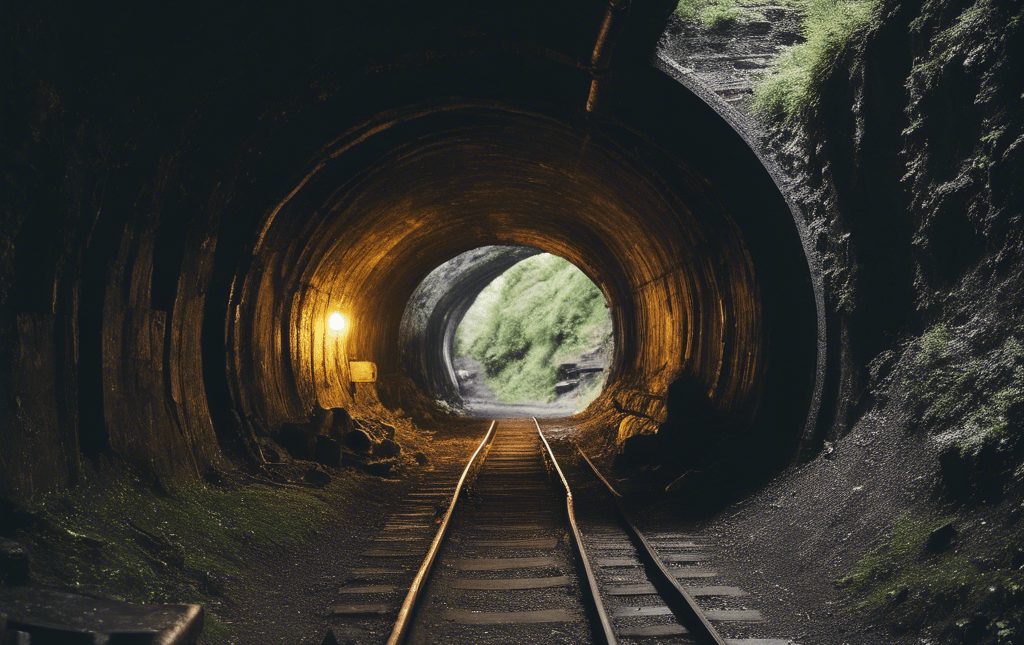Harnessing the Past for a Sustainable Future: Repurposing Disused Coal Tunnels for Clean Energy Solutions
Repurposing disused coal tunnels offers a dual solution to energy challenges in the UK and India. In the UK, tunnels can become geothermal heating systems, providing sustainable warmth, while in India, they can be integrated into pumped storage projects, offering a scalable and efficient solution to intermittent renewable energy sources, ultimately reducing carbon footprints and revitalizing communities.
Institute of the Happy Planet
11/25/20233 min read


In the ever-evolving landscape of sustainable energy, innovative solutions are essential to mitigate the environmental challenges posed by traditional energy sources. One such untapped resource lies beneath our feet - disused coal tunnels. While these tunnels may once have been symbols of a fossil fuel era, they now hold the potential to contribute significantly to reducing carbon footprints, particularly in regions with diverse climate needs.
Take the United Kingdom, for instance, where cold weather demands efficient heating solutions. Disused coal tunnels can be repurposed to provide a sustainable source of warmth by circulating water through a network of pipes. Geothermal energy, derived from the natural heat of the Earth, can be harnessed to warm water efficiently. This warm water can then be used to heat homes and businesses, offering a cleaner alternative to traditional heating methods that rely on non-renewable resources.
The transformation of these tunnels into geothermal heating systems not only addresses the pressing need for sustainable heating but also aids in the revitalization of communities that were once dependent on the coal industry. By repurposing the infrastructure of the past, we pave the way for a brighter and cleaner future, creating jobs and supporting local economies in the process.
In countries like India, where climatic conditions are diverse and energy demands are high, disused coal tunnels can find new purpose as components of pumped storage projects. Pumped storage power plants are a proven technology that uses gravity to generate electricity. Water is pumped from a lower reservoir to an upper reservoir during periods of low energy demand and excess power on the grid. When electricity demand is high, the stored water is released, flowing downhill and driving turbines to generate electricity.
The advantage of utilizing disused coal tunnels for pumped storage lies in the existing underground infrastructure. These tunnels can serve as conduits for water flow, reducing the need for extensive new construction. The topography of the tunnels can facilitate efficient energy storage, and the modularity of pumped storage systems allows scalability to meet the energy demands of a growing population.
By integrating disused coal tunnels into pumped storage projects, we repurpose old infrastructure and provide a reliable and flexible solution to the intermittency of renewable energy sources. This contributes to the stability of the electrical grid, supporting the transition to a cleaner and more sustainable energy mix.
Repurposing disused coal tunnels for geothermal heating and pumped storage projects presents a win-win scenario for both the environment and local communities. It offers an opportunity to phase out dependence on fossil fuels, reduce carbon emissions, and create new job opportunities in the renewable energy sector.
As we strive to meet the challenges of climate change, it's imperative that we look beyond traditional solutions and explore the potential lying dormant beneath our feet. Disused coal tunnels, once symbols of the past, can become key players in our quest for a sustainable and cleaner energy future. It's time to harness the power of innovation and reimagine these tunnels as conduits to a greener tomorrow.
(With AI Input)
Context:
The UK Vision - The inaugural large-scale mine water heat network in the United Kingdom has received acclaim from the Coal Authority six months into its operation. Launched in March 2023 by Gateshead Council, the mine water project features a significant central heat pump delivering low-carbon heating to 350 high-rise buildings, an art gallery, a college, an industrial park, and multiple office buildings.
What stores in India - In the context of advancing sustainable energy initiatives, Coal India has identified more than 20 abandoned mines suitable for pump storage projects. The government has disclosed that state-owned CIL is currently conducting comprehensive evaluations and feasibility studies for these identified sites. Furthermore, the National Lignite Corporation India Limited (NLCIL) is actively involved in a parallel feasibility study for pump storage projects. The vast potential lies not only in the repurposing of these abandoned mines but also in over 200 de-coaled mines across coal-producing regions, which offer significant land areas suitable for pump storage projects, thus contributing to the exploration of cleaner energy alternatives.
Contacts
enquiry@economicnations.org
(xx) 98-11-937-xxx (On verification)
